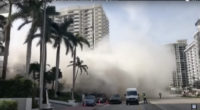Analysis: Pittsburgh Neglected Flood Risk And Consultant Is Target
A rainstorm, a flood, children trapped in a minivan. Rushing water sweeps a senior citizen into a sewer. The shocking nature of the deaths belie the bigger issues involving neglected urban infrastructure and the potential liability of engineering consultants.
Personal injury attorneys often file lawsuits that engineering companies and engineers consider frivolous. These "shotgun" lawsuits really are attempts to intimidate the engineers into a settlement, insurance broker Jeffrey Cavignac wrote years ago, because the cost of defending against the lawsuits can easily surpass any fees earned on the project and it's cheaper to give in.
How does a long-neglected piece of urban infrastructure expose a consulting engineer to liability? And when are the claims valid or without merit?
A recent lawsuit charged an engineering firm with negligence arising from the 2011 flash flood on a Pittsburgh road, a tragedy born from years of unaddressed problems with valley geography and infrastructure incapable of coping with a 100-year flood that seemed to occur more frequently. The plaintiffs name the engineering firm as one of the defendants, but the cast of potentially culpable parties is large.
The lawsuit, filed in the Allegheny Court of Common Pleas in Pittsburgh, targets Coraopolis, Pa.-based Chester Engineering Inc., which serves as the city’s consultant for the sewage authority. The lawsuit also targets the city of Pittsburgh, Allegheny County and its sewage authority, the Pennsylvania Department of Transportation and Chrysler Group, the maker of one of the vehicles involved in the drownings.
The victims of flooding on the heavily-traveled, four-lane road included Mary Saflin, 72, of nearby Oakmont, who was swept from outside her vehicle into a sewer conduit and killed. Kimberly Griffith, 45, and her daughters, Brenna, 12, and Mikaela, 8, drowned in their minivan when the sudden downpours created a 9-foot-high wall of water that filled a low-lying section of Washington Boulevard during rush hour on Aug. 19, 2011.
The road runs down a natural valley and intersects with Allegheny River Boulevard, a main traffic artery alongside the Allegheny River, which is at a higher elevation and which might have contributed to pooling of water that occurred in the area during the flash flooding.
The complaint in state court claims the authorities "permitted a man-made drowning pool to exist in the 13 foot 'basin' at the bottom of Washington Boulevard." Griffith family attorney Alan Perer says at least 30 flash floods have stranded vehicles in the same spot since one person was killed and 12 injured in a June 9, 1951 flood (the complaint includes a copy of a newspaper article about that flood). City officials and others have proposed improvements over the years, including warning signs, but little was done to correct the situation until the 2011 deaths, Perer says.
"We have filed this suit to hold people accountable for these terrible, needless, senseless deaths," Perer says.
Chester Engineers Chief Financial Officer Jim Flynn declined to comment on the suit.








